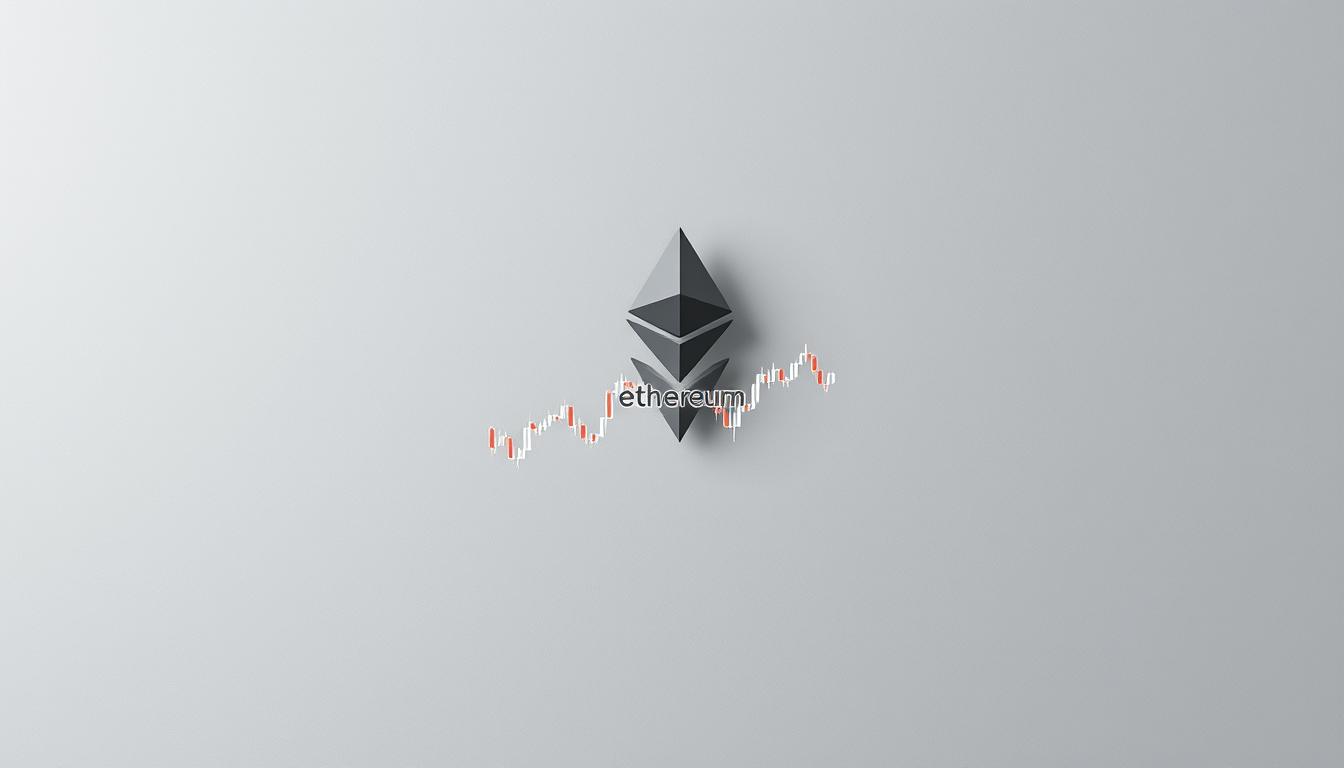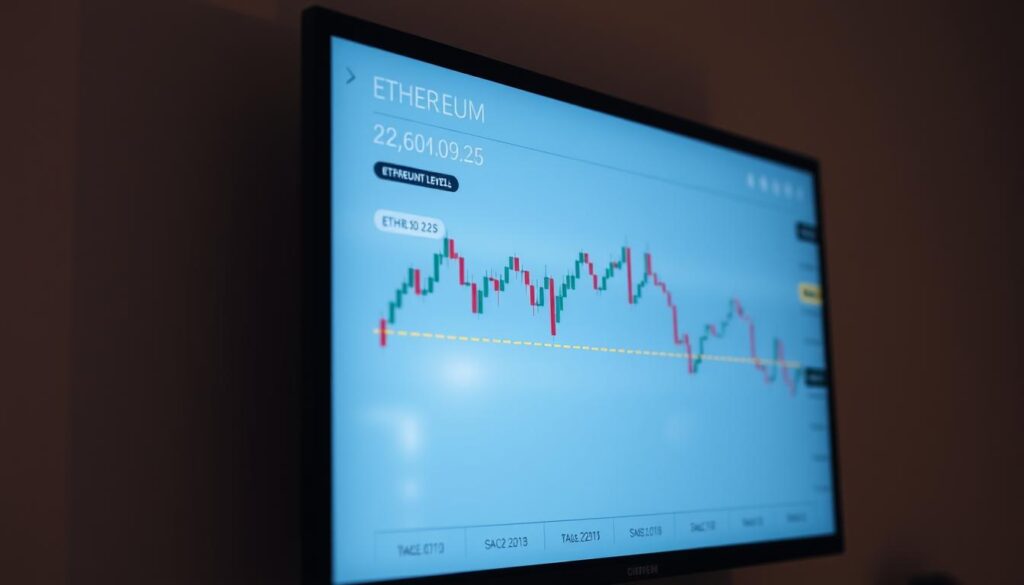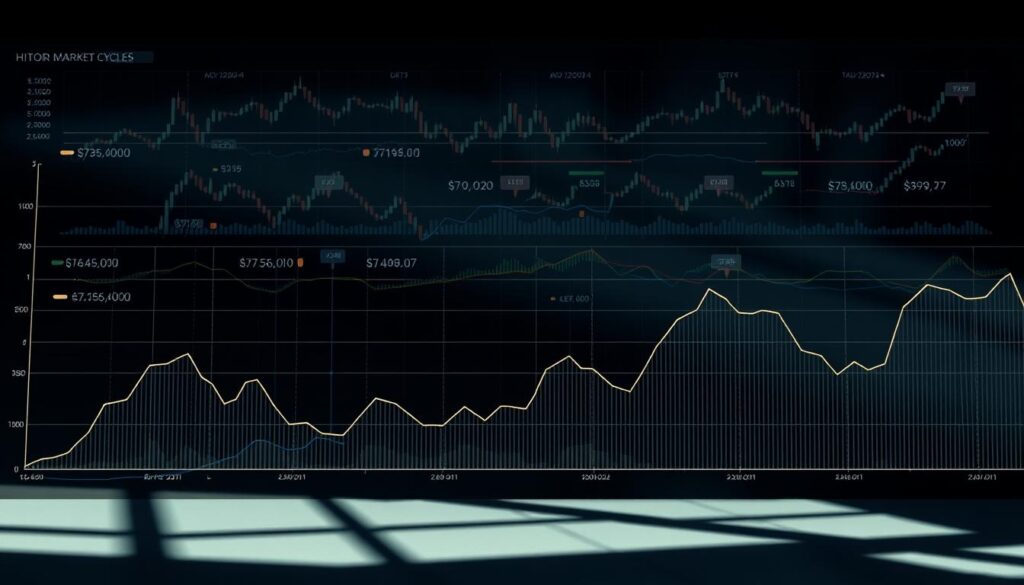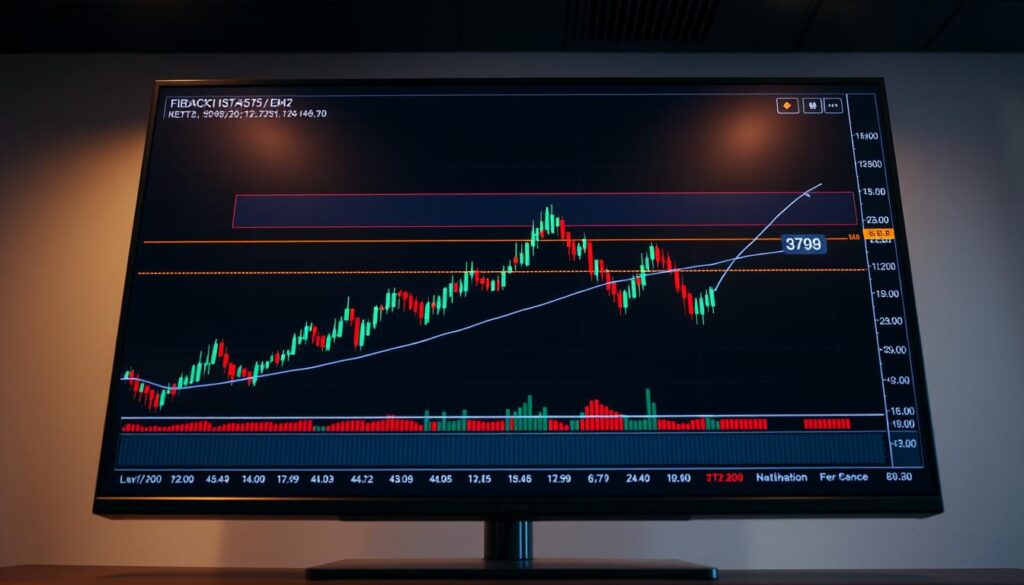Now Reading: Ethereum Price Analysis: Key Resistance Levels to Watch
- 01
Ethereum Price Analysis: Key Resistance Levels to Watch
Ethereum Price Analysis: Key Resistance Levels to Watch

Understanding the forces that drive digital asset valuation is crucial for anyone involved in the crypto space. This article offers a detailed look at the second-largest cryptocurrency, providing valuable insights into its current standing.
The broader market constantly shifts, and staying informed is key. With a valuation near $475 billion, this digital asset’s movements are significant. Its current price point, showing a recent uptick, highlights ongoing investor interest.
This piece will explore critical thresholds that often act as barriers to further gains. Recognizing these points can be the difference between a good and a great trading decision. We will break down the factors influencing the asset’s potential path.
Our goal is to equip you with a clear perspective on what to watch for in the coming weeks. Whether you are new to trading or have experience, this analysis aims to be a practical resource for navigating the volatile market.
Overview of Ethereum’s Current Market Landscape
Grasping the current state of the second-largest digital asset provides essential context for its recent movements. This snapshot of the present landscape helps establish a foundation for understanding its behavior.
Recent Price Dynamics and Trading Volume
The asset’s current price sits at approximately $3,944.5. This level demonstrates notable stability considering the broader market volatility.
A 24-hour trading volume near $38.35 billion signals robust activity. This high liquidity is a positive indicator for participants.
Market Capitalization and Historical Highs
A valuation exceeding $475 billion solidifies its position as a top contender. This substantial market cap reflects deep investor confidence.
When comparing the eth price to its peak of $4,955.3, it trades about 20% lower. Key metrics to note include:
- Circulating Supply: 120.70 million tokens.
- Volume/Market Cap Ratio: 0.0600, indicating healthy trading activity.
Understanding these metrics is vital at this moment. They help frame potential opportunities within the digital asset’s landscape.
Ethereum Price Analysis Resistance Levels
Market participants closely monitor certain thresholds that have proven difficult for the asset to surpass. These zones often determine whether upward momentum can continue or face rejection.
Identifying Key Resistance Thresholds
Technical examination reveals significant barriers between $4,200 and $4,800. The immediate challenge sits at $4,400, which has recently shifted from support to resistance.
This psychological level has historically attracted substantial selling activity. A decisive break above $4,400 could signal strength toward the next target near $4,700.
The $4,700 mark represents a critical profit-taking area. Early investors often liquidate positions here, creating temporary pressure.
Implications for Traders and Investors
For active traders, these thresholds represent crucial decision points. Position sizing and stop-loss placement require careful consideration at each level.
Understanding these barriers helps investors set realistic targets. It also enables contingency planning for various market scenarios.
This analysis provides valuable insights for crypto market participants. Proper risk management around key resistance levels can significantly impact trading outcomes.
Key Resistance Levels: Where Ethereum Faces Challenges
A detailed look at the barriers within the $4,200 to $4,800 range reveals the challenges ahead. This zone represents a critical battleground for the asset’s near-term direction.
Successful navigation through this area requires understanding the distinct pressures at each threshold.
Critical Barriers Between $4,200 and $4,800
The $4,200 mark acts as the initial gate. Traders who entered at lower points often take profits here, creating selling pressure.
Midway, the $4,500 level serves as a major psychological and technical hurdle. Momentum can often stall or accelerate significantly at this point.
Approaching $4,800, the asset nears its historical peak. This upper boundary presents the strongest challenge, with maximum historical selling activity.
The table below outlines these critical zones:
| Resistance Level | Characteristic | Trader Implication |
|---|---|---|
| $4,200 | Initial profit-taking zone | Watch for volume spikes |
| $4,500 | Psychological milestone | Key momentum indicator |
| $4,800 | Approaches all-time high | Maximum historical pressure |
Potential Breakout Indicators
Several signals can hint at a successful push past these barriers. Sustained trading volume above recent averages is a primary factor.
Positive divergence on momentum oscillators, like the MACD, also suggests underlying strength. A decisive daily close above a level is more significant than a brief intraday spike.
Consolidation patterns near these thresholds often precede a major move. This indicates accumulation is overcoming distribution.
A confirmed breakout above $4,800 with strong volume could trigger a substantial rally. Such a move would likely attract renewed interest from major market participants.
Support Levels: Stabilizing Ethereum’s Price
The foundation of any sustainable upward movement lies in identifying where buying interest typically emerges during market corrections. These critical zones provide stability during volatile periods.
Key Support Zones Around $3,500 to $3,800
Market observers have identified a crucial corridor between $3,750 and $3,350. This area represents a significant support level where institutional buyers often accumulate positions.
Should the asset return to this range and maintain stability, renewed buying interest typically follows. The $3,500 mark serves as a psychological boundary that has historically attracted substantial demand.

Historical Support Trends and Importance
Historical data shows consistent buying activity within the $3,500-$3,800 range. Multiple rebounds have occurred when the asset tests these support levels.
A decisive break below $3,350 could trigger technical selling toward $2,900. Understanding these levels helps traders manage risk effectively.
| Support Zone | Key Characteristic | Trading Implication |
|---|---|---|
| $3,750-$3,500 | Primary accumulation area | Watch for volume increases |
| $3,350 | Critical technical boundary | Monitor for breakdown signals |
| $2,900 | Secondary support level | Long-term buying opportunity |
These support zones work in tandem with resistance areas. Previous resistance often becomes future support, creating a dynamic roadmap for market participants.
Technical Analysis Tools Shaping the Trends
Market professionals rely on quantitative tools to decode complex patterns and forecast potential movements. These instruments provide objective frameworks for interpreting market behavior.
Fibonacci Retracement and Its Role
Fibonacci retracement levels identify potential zones based on historical swings. The 0.5 to 0.618 retracement levels are particularly critical for current market structure.
These mathematical ratios help traders anticipate where buying or selling pressure may emerge.
Relative Strength Index and Moving Averages
The RSI measures momentum by comparing recent gains to losses. Readings above 70 suggest overbought conditions, while below 30 indicates oversold scenarios.
Moving averages, like the 50-day and 100-day EMAs, smooth data to reveal underlying trends. They often act as dynamic support during trending markets.
MACD and Momentum Indicators
The MACD combines momentum and trend-following elements. Crossovers between the MACD line and signal line generate trading signals.
Current technical indicators show neutral readings. Oscillators are neither strongly bullish nor bearish, suggesting market indecision.
Combining multiple technical analysis tools creates robust strategies. This approach accounts for different aspects of price behavior and market structure.
Institutional Adoption and Its Impact on Price Movement
The integration of major financial institutions into the cryptocurrency ecosystem marks a pivotal shift in market dynamics. This trend fundamentally alters how large-scale participants interact with digital assets.
Traditional finance giants are now creating new pathways for institutional involvement.
Influence of Institutional Investors and Collateral Use
JPMorgan Chase’s plan to accept digital assets as loan collateral by late 2025 represents a significant milestone. This move provides new liquidity options for major holders.
Institutions can now leverage their long-term positions without selling their assets. This reduces selling pressure and supports market stability.

Staking rewards and regulatory progress make this cryptocurrency particularly attractive. These factors encourage long-term holding strategies among large investors.
The growing staking participation effectively locks up supply. This reduction in circulating tokens can influence future price movements.
| Factor | Institutional Impact | Retail Impact |
|---|---|---|
| Investment Horizon | Long-term positions | Short-term trading |
| Market Influence | Reduces volatility | Increases volatility |
| Asset Utility | Collateral and yield | Primarily speculation |
This evolution means digital asset valuation may increasingly follow traditional finance patterns. Interest rates and macroeconomic conditions could become more significant drivers.
The growing institutional presence creates a more mature market structure. This development supports sustainable growth for the entire cryptocurrency space.
Impact of Ethereum ETFs and Trading Strategies
The emergence of Exchange-Traded Funds represents a significant evolution in how investors access the digital asset class. These regulated products are gaining substantial traction, with Hong Kong recently approving its first spot ETF. This move signals growing acceptance in major financial centers.
ETFs as a Driver for Market Stability
ETFs bridge traditional finance and the crypto world. They allow both institutional and retail participants to gain exposure without the technical hurdles of direct ownership. This opens the door for a new wave of investment.
The impact on the broader market is notable. Fund managers must purchase the underlying asset to back shares, creating consistent demand. This buying pressure can support stability and upward momentum.
For traders, these products enable new trading strategies. Access through traditional brokerage and retirement accounts simplifies the process. Long-term capital from ETFs is less reactive to short-term swings, providing a calming effect.
| ETF Provider | Key Feature | Investor Consideration |
|---|---|---|
| iShares Ethereum Trust | Low expense ratio | Cost-efficient long-term holding |
| Grayscale Ethereum Trust | Established track record | Familiarity for existing investors |
| Fidelity Ethereum Fund | Integrated with platform | Convenience for Fidelity clients |
Monitoring ETF inflow data has become a crucial part of market strategy. Significant flows often precede sustained appreciation, offering valuable insights for participants in the crypto space.
Anticipated Upgrades: Enhancing Ethereum’s Market Position
Continuous development remains a cornerstone of any leading blockchain platform’s strategy. The network’s roadmap includes several important improvements aimed at boosting performance.

Upcoming Network and Efficiency Improvements
The Fusaka upgrade focuses on enhancing blob capacity for layer-2 transactions. This directly reduces operational costs for users across the ecosystem.
Other improvements like Pectra and Dencun address scalability limitations. They enable greater user activity without proportional fee increases.
These technical enhancements make the platform more attractive for developers. Reduced transaction costs encourage broader adoption.
Potential Effects on Liquidity and Transaction Costs
Network efficiency improvements create interesting supply dynamics. Enhanced burn mechanisms can create deflationary pressure.
Improved performance attracts more decentralized applications. This creates deeper markets for tokens and expands ecosystem value.
The platform strengthens its market positioning against competitors. Successful implementation often correlates with positive movements as participants anticipate improved fundamentals.
Market Sentiment and Trader Behavior Analysis
The collective mood of the market often acts as a powerful, yet invisible, force shaping asset trajectories. Gauging this sentiment provides a window into the psychology driving current trends.
Bullish Trends Versus Cautious Corrections
Current data reveals a fascinating split in market sentiment. Approximately 60% of traders maintain bullish positions, signaling strong optimism.
This positive outlook is tempered by the reality of the crypto market. Sentiment can reverse rapidly based on news or technical shifts.
This creates a constant tension between upward trends and the potential for a pullback. It is a critical moment for assessing conviction.
Role of Whale Activity in Current Movements
The actions of large holders, or “whales,” disproportionately influence movements. Their recent accumulation during dips suggests long-term confidence.
This behavior often foreshadows major market moves. It contrasts with retail traders who may chase short-term momentum.
Understanding these patterns offers a strategic advantage. The table below summarizes key indicators to watch.
| Indicator | Bullish Signal | Cautionary Signal |
|---|---|---|
| Trader Positions | >60% Long | Rapid decrease |
| Whale Activity | Accumulation on dips | Distribution on rallies |
| Funding Rates | Moderately positive | Excessively high |
Historical Price Patterns and Cyclical Trends
The cyclical nature of crypto markets reveals predictable stages that help traders anticipate future movements. These recurring patterns provide valuable context for current market conditions.

Analysis of Past Crypto Market Cycles
Historical data shows that digital assets follow four-year cycles often tied to Bitcoin’s halving events. This pattern creates distinct phases of accumulation and expansion.
Major cryptocurrencies typically consolidate before significant breakouts. This allows strategic accumulation by informed participants. The current market shows similarities to previous pre-breakout periods.
Lessons from Previous Bull Runs
Previous cycles teach us that euphoric sentiment often signals cycle peaks. Recognizing distribution patterns can prevent significant losses.
Digital assets maintaining strength during corrections often lead the next rally. This resilience indicates underlying trends worth monitoring. As seen in a recent market analysis, temporary setbacks can precede major surges.
Each cycle brings unique characteristics influenced by regulatory and technological developments. Understanding these trends helps navigate the volatile crypto market landscape.
Exploring Ethereum’s Role in Decentralized Finance (DeFi)
Smart contract capabilities have unlocked unprecedented financial innovation by enabling trustless automation of complex agreements. This technology forms the backbone of the entire decentralized finance ecosystem.
The platform hosts a diverse range of financial applications without traditional intermediaries. Lending protocols, decentralized exchanges, and yield farming opportunities all operate on this foundation.
Smart Contract Capabilities and Asset Tokenization
Programmable contracts execute automatically when conditions are met. This eliminates counterparty risk and creates reliable financial systems.
Asset tokenization represents a major breakthrough for the blockchain space. Real estate, commodities, and artwork can become digital tokens with fractional ownership.
Standardized protocols ensure interoperability across the ecosystem. This creates deep liquidity pools for various digital assets.
The growth of decentralized finance directly supports the network’s value proposition. Increased activity drives demand for transactions and fee generation. Understanding these dynamics is crucial for any digital asset strategy.
Tokenized assets and automated finance protocols demonstrate the transformative potential of this technology. The platform continues to evolve as the leading hub for decentralized finance innovation.
Conclusion
Making informed decisions in the crypto landscape involves synthesizing various analytical perspectives into actionable insights. This comprehensive examination has explored multiple dimensions of the digital asset space, from technical patterns to fundamental developments.
The blockchain platform continues to evolve with significant upgrades and growing institutional adoption. These factors create a dynamic environment for trading and investment strategies. Understanding market sentiment and historical trends provides valuable context for current movements.
Staying informed about both technical indicators and fundamental shifts remains crucial. The platform’s role in decentralized finance and tokenized assets creates lasting value beyond short-term fluctuations. Successful navigation requires balanced strategies that account for both opportunity and risk in this rapidly changing market.














